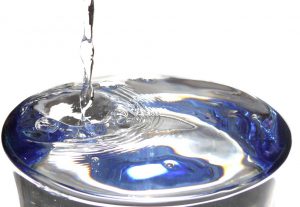 Back in 2002, the UN declared for the first time that access to clean drinking water is a human right. In the intervening years, there has been significant progress in access to water, but there is still a lot of work to do. That said, a lot of water is sold and transported in single-use plastic bottles, which cannot be recycled, and this is bad for the environment. In the developed world, there has been a remarkable uptake in bottled water consumption, and the market now exceeds $15 billion per year in the U.S. alone. But, a more affordable and environmentally conscious way to consume clean water is to install a reverse osmosis (RO) filtration system in your home.
Back in 2002, the UN declared for the first time that access to clean drinking water is a human right. In the intervening years, there has been significant progress in access to water, but there is still a lot of work to do. That said, a lot of water is sold and transported in single-use plastic bottles, which cannot be recycled, and this is bad for the environment. In the developed world, there has been a remarkable uptake in bottled water consumption, and the market now exceeds $15 billion per year in the U.S. alone. But, a more affordable and environmentally conscious way to consume clean water is to install a reverse osmosis (RO) filtration system in your home.
What is RO Filtration?
At the heart of an RO filtration system is a semi-permeable filter membrane with tiny pores that prevent a wide variety of contaminants from passing through. To push the water through the filter, it must be placed under pressure, and the filtration takes some time. For this reason, it would be impractical to expect on-demand RO water filtration. To get around this problem, the RO filtered water is stored in a tank for easy access at any time. It is possible to get a whole-house RO filtration system that delivers purified water to every plumbing fixture and water using appliances. But, most people choose a simpler point-of-use (POU) system installed at a single tap which is usually located in the kitchen. This makes RO water access easier for decanting to a pitcher for the refrigerator, food prep, making super clear ice cubes, and cooking.
How Does RO Filtration Work?
There are many RO filter brands and models to consider, and they all have their various pros and cons. But, at the basic level, they all work in pretty much the same way and the only major difference is the number of filter stages they have. The main filter stage is always the semi-permeable reverse osmosis filter. But, this is supported by other filter stages that protect the RO filter and add some extra character to the RO water. A typically affordable RO filter may have four filtration stages:
- A Sediment Prefilter: This removes sediment that can damage the sensitive components in the RO filtration system.
- The First Granular Activated (GAC) Filter: The purpose of the filter stage is to remove the chlorine or chloramine (the chlorine mixed with ammonia) from the incoming public water to protect the semi-permeable RO filter from potential damage.
- The RO Filter: This is where the contaminants are removed to create water that’s extremely clean and healthy.
- The Second GAC Filter Stage: Much like the charcoal filters found in water filter pitchers, this filtration stage is designed to add a little character back to the water to improve the taste.
Together these filter stages create water that is affordable and easy to access without creating plastic waste that’s harmful to the environment.
If you want to learn more about installing a reverse osmosis filtration system in your home, contact your local water treatment specialist.
